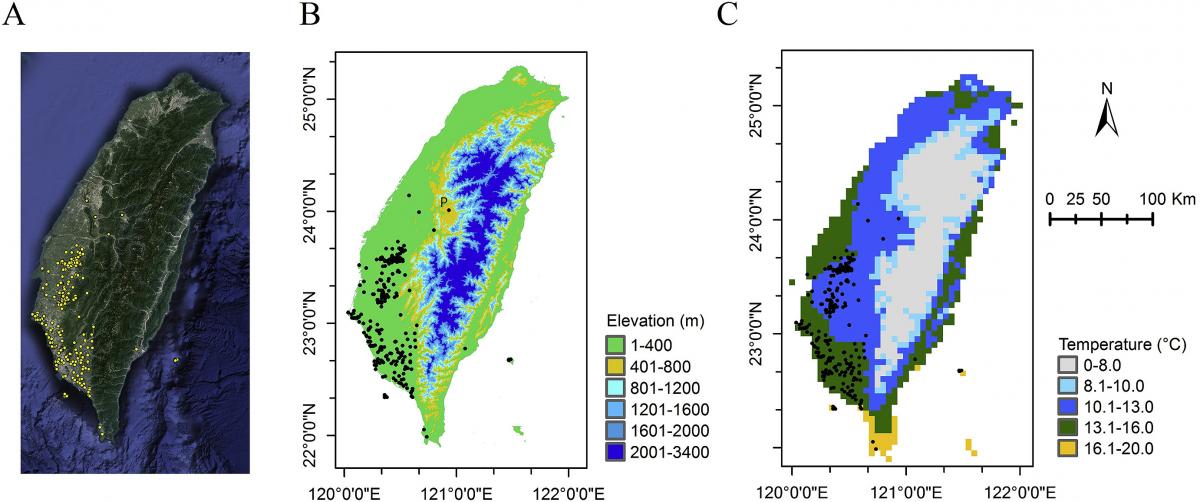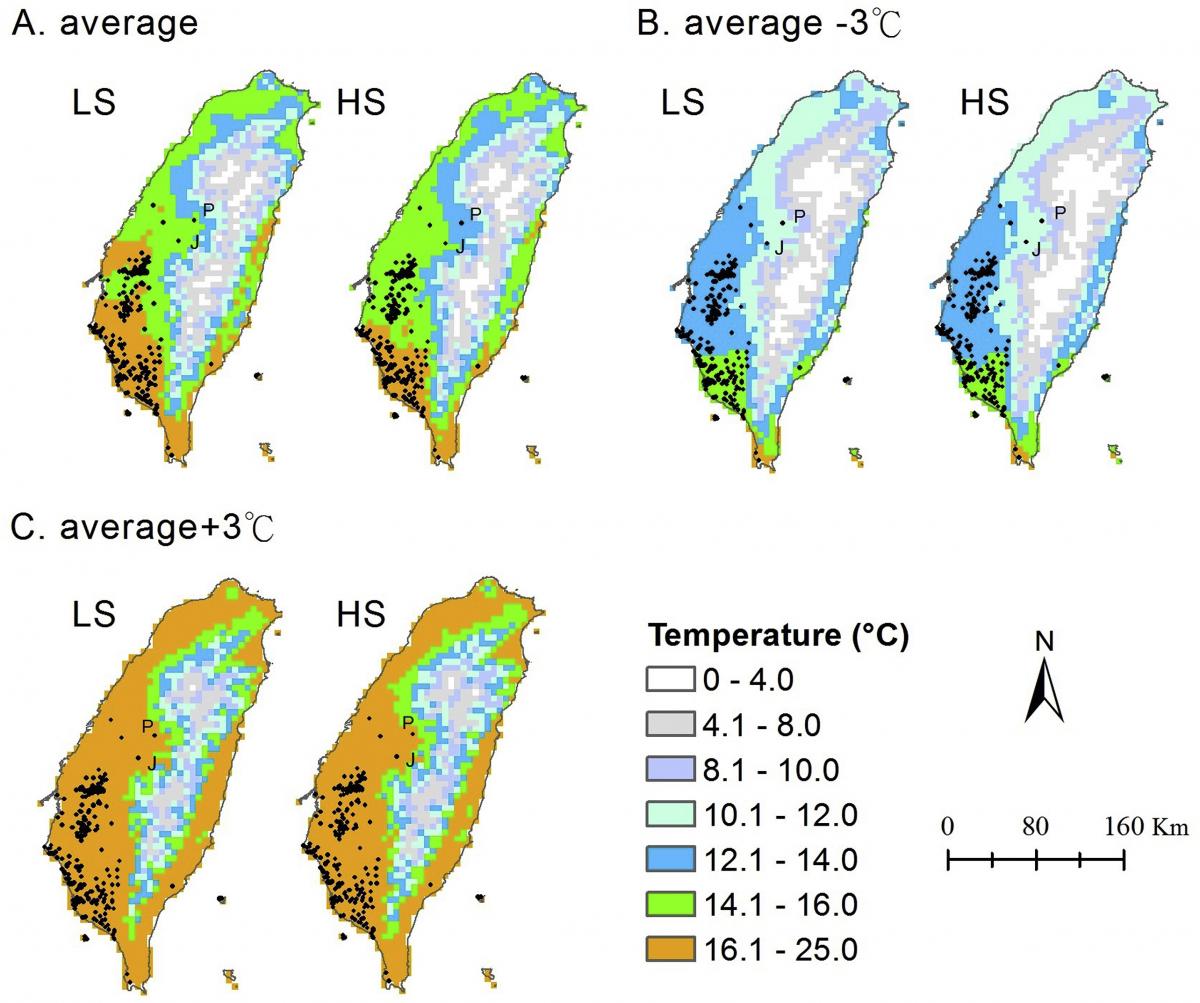Abstract
1. The invasive many-lined sun skink, Eutropis multifasciata, is established in much of southern Taiwan and is spreading northward. We investigated whether winter temperatures constrain further dispersion of this skink by comparing its cold tolerance to the spatial distribution of winter temperatures in Taiwan.
2. We measured the 28-day survival rate of this species at 4 constant temperatures (10−16 °C in 2 °C increments) and its critical thermal minimum (CTmin), i.e., the body temperature at which the righting reflex is lost during the cooling process. For comparison with the spatial distribution of temperatures over Taiwan, we used the biophysical model Niche Mapper™ in order to simulate the soil temperatures, where lizards are inactive in the winter, during the coldest month of the year, January, under three climatic scenarios (average temperature, average−3 °C, average+3 °C).
3. Our results indicate that this species has low tolerance to cold. Combining cold tolerance data with soil temperature data suggests that its upper elevation limit could range from 1000 m to 1500 m, above which the weather is lethal and precludes overwintering. The locations of sightings of E. multifasciata are consistent with this prediction, with no known locations above 500 m elevation.
4. This study highlights that the winter climate is a major factor in determining population establishment and hence in limiting this species’ range. Future studies would benefit from accounting for low winter temperatures and their potential influence on range limits of invasive species.
Keywords
Critical thermal minimum, Survival rates, Acclimation, Distribution

Fig. 1. Sighting locations of E. multifasciata on (A) an aerial photo (B) a digital elevation map and (C) January minimum air temperatures of Taiwan. Sightings are shown with yellow dot in (A) or black dots in (B) and (C) (n = 442). The Puli site (denoted by the letter P) is located at the elevation of 480 m. Temperature data: Average January minimum air temperature (data duration: 2005–2014, TCCIP, https://tccip.ncdr.nat.gov.tw/). (For interpretation of the references to colour in this figure legend, the reader is referred to the Web version of this article.)

Fig. 3. Average soil temperatures simulated for January in the (A) average (B) average +3 °C and (C) average -3 °C temperature scenarios. LS: 20% shade level; HS: 80% shade level. Sightings are shown with black dots (n = 442). Notation: P: Puli site, J: Jiji site. (For interpretation of the references to colour in this figure legend, the reader is referred to the Web version of this article.)
Cite or download this article as:
Lin, T.-E., T.-Y. Chen, H.-L. Wei, R. Richard, and S.-P. Huang. 2019. Low cold tolerance of the invasive lizard Eutropis multifasciata constrains its potential elevation distribution in Taiwan. Journal of Thermal Biology 82:115-122.(Anyone clicking on this link before June 06, 2019 is free to read or download.)